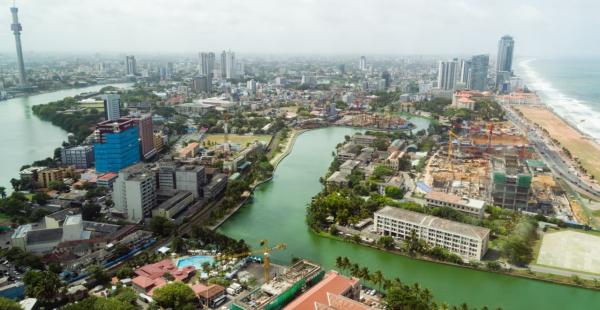
Sri Lankan MRV ensures transparent and impactful NDCs
Collaboration across ministries has resulted in a unique institutional arrangement for data collection and the development of the country’s first MRV system for climate action. It also paves the way for replication in other key sectors in Sri Lanka.
Sri Lanka has designed a national Monitoring, Reporting and Verification (MRV) system for the transport sector as well as revised its transport related Nationally Determined Contributions (NDC) policies. Supported by the Initiative for Climate Action Transparency (ICAT), the collaboration between the Ministry of Mahaweli Development and Environment, the Ministry of Transport and Civil Aviation, UNEP DTU Partnership, and Climate Smart Initiatives (Pvt) Ltd (ClimateSI) has resulted in an institutional arrangement for data collection and the development of the country’s first MRV system for climate action.
The design of the MRV system is based on ICAT’s policy assessment guides and follows the Paris Agreement’s Enhanced Transparency Framework.
Data is key
Experts from UNEP DTU Partnership and ClimateSI worked with Sri Lankan stakeholders to help create an inter-ministerial data management system. Part of this work also included raising awareness and improving communication between national stakeholders. As a result, all stakeholders in Sri Lanka now have an understanding of the MRV system and the benefits of transparency in climate actions and NDC reporting.
Transparent NDCs
Another important aspect of developing the MRV and data management system is that Sri Lanka can use the systemised data for NDC reporting, measure and report on impact of climate action and thus help mobilise finance. For example, using the Greenhouse Gas Abatement Cost Model (GACMO), developed by UNEP DTU Partnership, Sri Lankan stakeholders were able to use the data to secure additional funding from the Green Climate Fund.
Also, “UNEP DTU Partnership helped us revise NDC on transport by applying GACMO to scientifically assess the greenhouse gas index for our transport NDCs,” Buddika Hemashantha, Chief Executing Officer in ClimateSI, explains. The MRV system can be used to translate overall NDC targets to sector sub-targets, while providing a framework and data for reporting on those targets, making NDCs more realistic and transparent.
Phase two started
In early 2020 the second phase of ICAT’s work on MRV systems in Sri Lanka began, this time focusing on sustainable development, revising and tracking NDCs and a continuation of the previous work.
Again, using GACMO, the sustainable development impact of mitigation actions will be added to the system, enabling reporting and planning on both climate and development impacts.
The continuation of the project will also focus on solidifying the MRV system, among other things through digitalisation. Also, with MRV in place for the transport sector, and the data management system implemented by all stakeholders, the knowledge gained shall be applied to capacity-building in new sectors.

